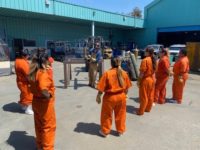As states grapple with the need to reduce carbon emissions, widespread retrofitting of industrial facilities and powerplants with capture and storage technology remains an elusive goal and emerging challenge in the U.S.
But Lou Hinkman, deputy assistant secretary of the U.S. Energy Dept.'s Office of Clean Coal and Carbon Management, said on a June 4 webinar that so-called carbon capture storage and utilization technology (CCUS) will be “the key technology going forward” to ensure power reliability, affordability and environmental sustainability. “Fossil fuels are here to stay [and are not simply] transition fuels.”
DOE is soon expected to release $76 million in funding for design development and front-end engineering design (FEED) studies under its Coal FIRST systems program. In 2019, it awarded $55.4 million in federal funding for cost-shared research and development and FEED studies at nine coal or natural gas plants, and up to $20 million for four regional R&D initiatives.
DOE has actively backed demonstration projects since the Obama administration. Some commercial-scale attempts have flopped, with huge cost overruns and schedule delays. Over the years, officials have raised concerns about how to make large-scale commercial projects cost-effective.
Commercial-scale CCUS projects generally have fared better so far in Canada. The newest is the $1.2-billion Alberta Carbon Trunk Line, which went on line the first week of June. The 240-km pipeline will transport CO2 captured at two industrial facilities to oil fields in Clive, Alberta, for enhanced oil recovery. The system is expected to capture 1.8 megatons of CO2 annually and eventually ramp up to capture 15 Mt/year.
SaskPower’s Boundary Dam Unit 3 powerplant, which went online in 2014, was the world's first commercial-scale CCUS powerplant.
Bob Perciasepe, president of the Center for Environmental and Energy Solutions and former U.S. Environmental Protection Agency deputy administrator, said during the June 4 webinar that states need to consider “how CCUS fits into their state carbon plan.”
Carbon-Capture in Pennsylvania
With a high concentration of coal-fired powerplants and industrial facilities that include cement and iron and steel manufacturers, pulp and paper mills, refineries and petrochemical plants, Pennsylvania is one of the largest U.S. carbon emitters, producing more greenhouse gas emissions than a number of developing countries, according to webinar information.
Six coal-fired power plants, five close to each other in western Pennsylvania, generate more than 15% of the state's carbon emissions. Finding a way to capture those emissions will be essential for the state to meet its emission reduction targets, said a study completed by the Clinton Climate Initiative in 2009.
"The network approach we pioneered and studied over a decade ago ... is still relevant to deploying CCUS in Pennsylvania, by taking advantage of economies of scale, shared infrastructure, and planning for scale at project inception," said John Quigley, former secretary of the state department of conservation and natural resources. "If we are to salvage a habitable climate, CCUS is an essential technology for industrial CO2 emitters, and for any fossil-fueled power plants - coal and natural gas - that remain on-line. The network approach can provide a pathway to deployment of the technology at the necessary scale."
Establishing CCUS “hub and cluster” networks could allow shared transportation and storage infrastructure, said John Thompson, technology and marketing director of the Clean Air Task Force, a Boston-based environmental non-profit.
He also suggested that Pennsylvania develop a public utility that would manage statewide CO2 storage and transport “provides certainty about storage,” noting that the certainty in having CO2 captured at a power plant or industrial facility “matters more than even the cost in terms of getting these projects built.”
Retrofitting industrial facilities and power plants to reduce carbon emissions is good for the environment and creates jobs, said Martin Williams, national coordinator of legislative affairs for the international boilermakers union. If the state took full advantage of incentives for CCUS projects created in Section 45Q of the U.S. tax code in 2018, between 1,800 to more than 3,000 construction jobs could be created, he said.
The Internal Revenue Service last month published detailed rules on tax incentives for the projects, awaited since the 2018 law.
Denise Brinley, executive director of Pennsylvania’s Office of Energy in Harrisburg said the agency is actively seeking companies that would consider developing and constructing a demonstration project in the state. “We have the geology to do it…We would like to find a company that wants to fund and validate” the technology for a demonstration project," she told webinar attendees.






Post a comment to this article
Report Abusive Comment